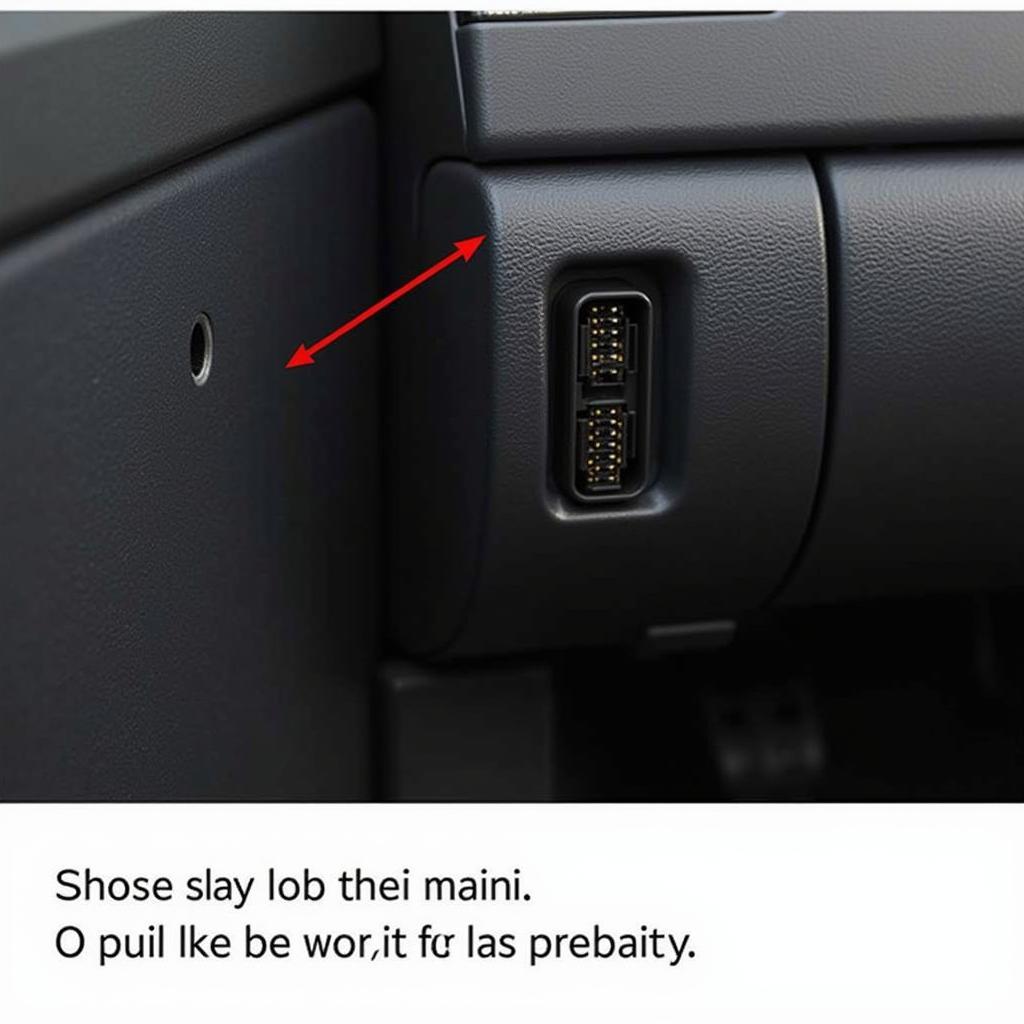The TPMS light glaring from your dashboard can be a nuisance, but more importantly, it signals a potential safety concern. A malfunctioning Tire Pressure Monitoring System (TPMS) compromises your vehicle’s handling, fuel efficiency, and most importantly, your safety on the road. Thankfully, Tpms Diagnostic Service Tools have revolutionized how we diagnose and resolve TPMS issues, providing a quick, accurate, and cost-effective solution.
Understanding the Importance of TPMS and Diagnostic Tools
Before diving into the specifics of TPMS diagnostic tools, it’s crucial to understand the vital role of the TPMS itself. This system, mandated in the US for vehicles manufactured after 2007, utilizes sensors within each tire to continuously monitor air pressure. If the pressure drops below a safe threshold, the TPMS alerts the driver via the dashboard warning light, prompting them to take immediate action.
However, like any other system in your vehicle, the TPMS is susceptible to issues. Sensors can malfunction, batteries can die, and programming errors can occur. This is where TPMS diagnostic service tools come to the rescue. These tools act as a direct line of communication with your vehicle’s TPMS, allowing you to:
- Identify the exact issue: Is it a faulty sensor, a weak battery, or a programming error? Diagnostic tools provide specific diagnostic trouble codes (DTCs) that pinpoint the root cause.
- Read sensor data: Access real-time data from each sensor, including pressure, temperature, battery life, and sensor ID.
- Program new sensors: When replacing sensors, diagnostic tools are essential for programming them to your specific vehicle make and model.
- Reduce diagnostic time: What used to take hours of manual labor can now be done in minutes with a TPMS diagnostic tool.
Choosing the Right TPMS Diagnostic Service Tool for You
The market offers a wide range of TPMS diagnostic service tools, each with varying functionalities and price points. The right choice depends on your specific needs and expertise:
- DIY Enthusiasts: For basic TPMS maintenance like checking sensor IDs or relearning sensors after a tire rotation, an entry-level handheld tool is usually sufficient. These tools are user-friendly, affordable, and offer essential TPMS functions.
- Professional Technicians: For comprehensive diagnostics, advanced programming, and compatibility with a wide range of vehicle makes and models, professional-grade TPMS diagnostic service tools are indispensable. These tools offer advanced features, bi-directional communication, and regular software updates to stay current with evolving vehicle technology.
Benefits of Investing in a TPMS Diagnostic Service Tool
Investing in the right TPMS diagnostic service tool, whether you’re a car owner or a professional technician, offers numerous benefits:
- Enhanced Safety: Accurate and timely diagnosis of TPMS issues ensures that you’re always aware of your tire pressure, minimizing the risk of accidents caused by underinflated or overinflated tires.
- Improved Fuel Efficiency: Driving on tires with optimal pressure maximizes fuel economy, saving you money at the pump.
- Extended Tire Lifespan: Properly inflated tires wear evenly, extending their lifespan and reducing the need for premature replacements.
- Time and Cost Savings: By accurately diagnosing and resolving TPMS issues, you avoid unnecessary trips to the mechanic and potential misdiagnoses, saving both time and money.
“Investing in a quality TPMS diagnostic tool is a no-brainer,” says John Smith, Senior Automotive Technician at ABC Auto Services. “It’s like having an X-ray vision for your tires. It helps us pinpoint the issue accurately, saving our customers valuable time and money.”
Conclusion: TPMS Diagnostic Service Tools – Essential for Safety and Efficiency
TPMS diagnostic service tools have become indispensable for maintaining vehicle safety and performance. From identifying faulty sensors to programming new ones, these tools empower car owners and technicians to diagnose and resolve TPMS issues with ease and precision. Whether you’re a DIY enthusiast or a seasoned professional, investing in the right TPMS diagnostic tool is an investment in your safety and the longevity of your vehicle.
For guidance on choosing the right TPMS diagnostic service tool for your needs, feel free to contact us at ScanToolUS. Our team of experts is here to assist you. Call us at +1 (641) 206-8880 or visit our office at 1615 S Laramie Ave, Cicero, IL 60804, USA.
ts401 tpms diagnostic service tool review
FAQs
1. How often should I check my tire pressure?
It’s recommended to check your tire pressure at least once a month and before long road trips.
2. Can I replace a TPMS sensor myself?
While possible, it’s recommended to have TPMS sensors replaced by a professional as it involves breaking down the tire and proper installation is crucial for sensor functionality.
3. Do I need to reprogram my TPMS sensors after a tire rotation?
Yes, most vehicles require TPMS reprogramming after a tire rotation to ensure the sensors are correctly assigned to their new positions.
4. What does the flashing TPMS light indicate?
A flashing TPMS light usually indicates a problem with the TPMS system itself, such as a faulty sensor or a system malfunction.
5. How long do TPMS sensor batteries last?
TPMS sensor batteries typically last between 5 to 10 years, depending on usage and environmental factors.
tire pressure monitor diagnostic tool
6. Are all TPMS diagnostic tools compatible with all car models?
No, different TPMS tools offer varying levels of compatibility. It’s crucial to choose a tool that supports your specific vehicle make, model, and year.
7. Can a TPMS diagnostic tool diagnose other car problems?
While primarily designed for TPMS, some advanced diagnostic tools offer additional functionalities for diagnosing other vehicle systems.



